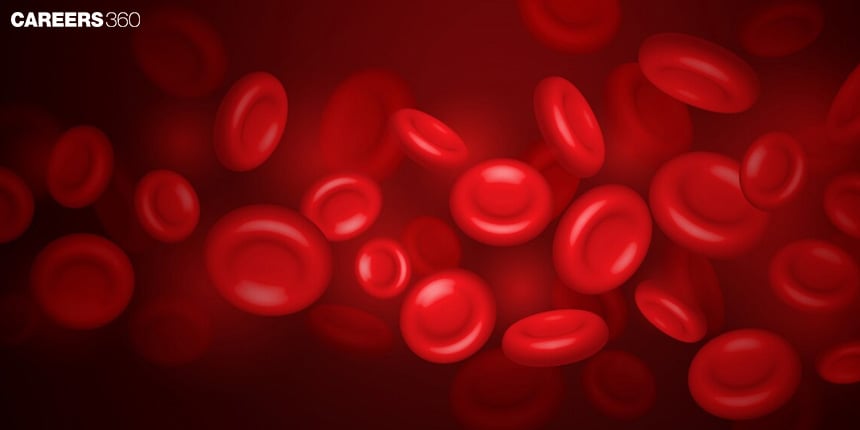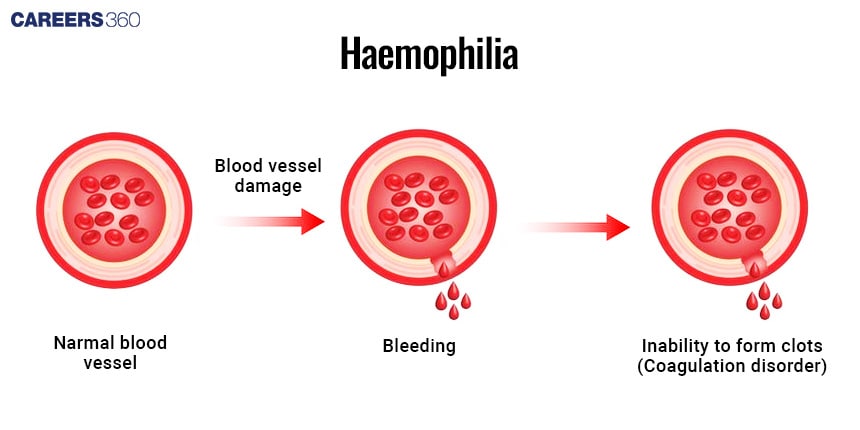Hemophilia: Overview, Meaning, Causes, types, symptoms, treatment
Definition Of Haemophilia
Haemophilia is one of the rare genetic bleeding disorders involving the deficiency of certain clotting factors in the blood, responsible for proper blood coagulation; this causes spontaneous or post-injury prolonged bleeding due to the inability of blood to form clots as it should.
Understanding haemophilia forms the basis of good management and treatment. Awareness brings diagnosis at an early age, proper medication, and a better quality of life for those who suffer from it. It also lends a hand towards the de-stigmatization of the disorder and helps in facilitating support by providing funds for research and the development of new therapies.
- Definition Of Haemophilia
- Diagram: Haemophilia
- Types Of Haemophilia
- Genetic Basis
- Symptoms And Diagnosis Of Haemophilia
- Diagnostic Methods
- The Video Recommended On Haemophilia:

The term "haemophilia" was first introduced in the 19th century. Historical documents point out that the condition was yet known as early as the 2nd century AD. The most famous royal families in Europe, direct descendants of Queen Victoria, have been recorded as suffering from haemophilia and brought great awareness to the condition.
First, there were no effective treatments for haemophilia. The introduction of blood transfusions early in the 20th century was the first breakthrough. The introduction of factor concentrates during the 1960s–1970s changed the position greatly, making it possible for haemophilia patients to manage their illnesses more satisfactorily. Some of the recent developments are recombinant DNA technology and gene therapy—newly opened perspectives for treatment.
Diagram: Haemophilia
Given below is the diagrammatic representation of the Haemophilia condition:

Types Of Haemophilia
Haemophilia is categorised as:
Haemophilia A (Factor VIII Deficiency)
This is the most frequent of the two, accounting for about 80% of the cases. It is caused due to the deficiency of factor VIII, which is a protein needed in blood clotting.
Haemophilia B (Factor IX Deficiency)
Haemophilia B, or Christmas disease, is due to a Factor IX deficiency. It is much rarer than Haemophilia A, but the clinical features are similar.
Rare Forms (e.g. Haemophilia C)
Haemophilia C is due to a Factor XI deficiency. It is extremely rare and usually only causes mild symptoms. It doesn't have the same X-linked recessive pattern of inheritance as Haemophilia A and B.
Genetic Basis
The details are given below:
Inheritance Patterns (X-linked Recessive)
Haemophilia A and B are inherited as X-linked recessive. The defective gene is located on the X chromosome. Because males have one X chromosome, they are more commonly affected, whereas females, who have two X chromosomes, are typically carriers but may occasionally have milder manifestations.
Genetic Mutations Involved
These conditions are due to a wide range of mutations in the F8 gene, which encodes for Haemophilia A, and the F9 gene, which encodes for Haemophilia B. They involve deletions, insertions, and even point mutations that affect the synthesis or functionality of these clotting factors.
Epidemiology
Haemophilia is rare, occurring in approximately 1 in every 5,000 male births for haemophilia A and 1 in every 30,000 male births for haemophilia B. Prevalence varies greatly between regions, however, due to differences in genetic backgrounds and health care infrastructure setup.
Haemophilia is an equable agent in all ethnic and geographical groups. However, with its hereditary character, a strong connection with family history is expected. Cases are usually diagnosed already in infancy, although milder forms may be detected later.
Symptoms And Diagnosis Of Haemophilia
The symptoms and diagnosis are described below:
Common Signs And Symptoms
People suffering from haemophilia often bleed for a longer period, have frequent nosebleeds, easy bruising of skin and muscles, and excessive bleeding after being injured or operated on. Some of the major challenges most of these patients go through include pains and swelling of joints due to internal bleeding (haemarthrosis).
Mild Haemophilia: With 5-40% of normal clotting factor levels; usually, they bleed only after surgery or trauma.
Moderate Haemophilia:1-5% of normal clotting factor levels; bleeding at times occurs after minor injuries.
Severe Haemophilia: <1% of normal clotting factor levels; spontaneous bleeding episodes are frequent.
Diagnostic Methods
The diagnostic methods are described below:
Blood Tests (Factor VIII and IX Levels)
Diagnosis is primarily by blood tests measuring Factor VIII or IX levels. Low levels of these factors confirm the diagnosis of Haemophilia A or B.
Genetic Testing
Genetic testing may show specific mutations in the F8 or F9 genes, which can aid in confirming the diagnosis and elucidating the genetic basis of the disorder. This might help in family planning or to identify carriers.
Family History Analysis
A good family history of haemophilia can indicate the pattern of inheritance and the risk to family members. Genetic counselling is usually indicated in families with a family history of this condition.
Conclusion
Haemophilia is one such genetic disorder that is both incomprehensible and tricky to handle. In this article,-the definition, types, genetic basis, symptoms, diagnosis, and historical background of haemophilia have been explained. Early diagnosis and effective therapy, with further research into haemophilia, are of prime importance in improving the quality of life of individuals afflicted with this disorder. One can reduce this burden by continuous education and supporting the people to make society more accessible to haemophiliacs.
The Video Recommended On Haemophilia:
Frequently Asked Questions (FAQs)
Haemophilia is a genetic disorder whereby the inability of blood to clot is caused by a deficiency in clotting factors. The pattern of inheritance is on the X chromosome; thus, the majority of cases are found in males, with females only being carriers.
The major types include Haemophilia A, caused by a Factor VIII deficiency, and another is Haemophilia B, caused by a Factor IX deficiency. Then there is also an uncommon form called Haemophilia C, due to a Factor XI deficiency.
The common symptoms that are usually visible include long bleeding, frequent nosebleeds, easy bruising, excessive bleeding after injuries, and pain and swelling in the joints due to internal bleeding.
Blood tests for clotting factors VIII and IX will tell their levels, while genetic testing can also be done to confirm the specific mutations involved.
It has treatment options such as prophylactic and on-demand factor replacement therapy, gene therapy, and more recent ones like monoclonal antibodies. Some changes in lifestyle and management of the bleeding episode are equally important.
Also Read
02 Jul'25 06:22 PM
02 Jul'25 06:22 PM
02 Jul'25 06:18 PM
02 Jul'25 06:18 PM
02 Jul'25 06:18 PM
02 Jul'25 06:17 PM
02 Jul'25 06:17 PM
02 Jul'25 06:17 PM
02 Jul'25 06:16 PM